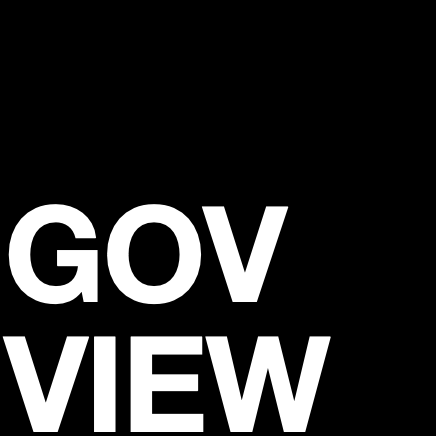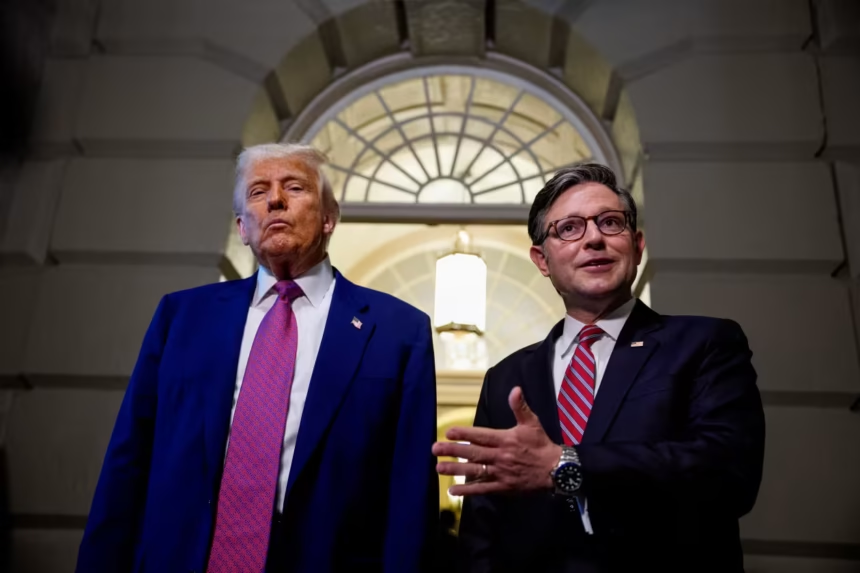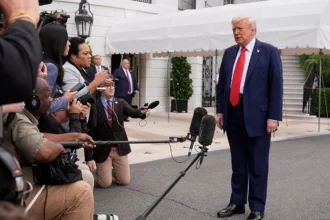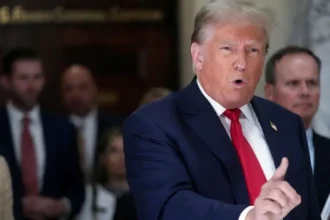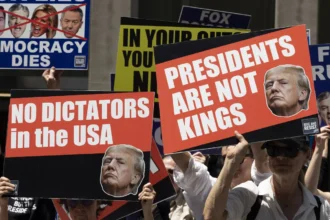The Congressional Budget Office (CBO) has issued a stark warning regarding the potential fiscal impact of President Donald Trump’s proposed tax cuts, projecting that they could result in a nearly $500 billion reduction in Medicare funding beginning in 2027. The analysis has reignited debate over the long-term consequences of tax policy and its intersection with social programs critical to millions of Americans.
1. Overview of the Proposed Tax Cut
Trump’s tax cut plan focuses on reducing individual and corporate tax rates, with the stated goal of stimulating economic growth and increasing disposable income. While supporters argue the cuts could spur investment and job creation, the CBO’s analysis emphasizes the trade-offs associated with large reductions in federal revenue.
Key elements of the proposed tax changes include:
- Lowering marginal income tax rates across brackets
- Reducing corporate tax rates further
- Expanding certain deductions and credits
2. CBO’s Projection for Medicare
The CBO report highlights that decreased federal revenue would necessitate reductions in government spending, with Medicare—a major entitlement program—facing significant cuts:
- Projected Shortfall: By 2027, Medicare could see reductions approaching $500 billion cumulatively.
- Impact on Beneficiaries: Cuts could affect coverage, reimbursement rates for providers, and access to certain services, potentially placing greater financial strain on seniors and those with chronic health conditions.
- Budgetary Pressure: Medicare constitutes a large portion of the federal budget, meaning that any shortfall would require either additional borrowing or deep spending adjustments elsewhere.
3. Political Debate
Trump’s tax proposal has sparked intense political debate:
- Supporters’ Perspective: Advocates argue that tax cuts incentivize economic growth, which could ultimately increase federal revenues indirectly through higher employment and consumer spending.
- Critics’ Concerns: Opponents contend that the cuts primarily benefit high-income individuals and corporations, while shifting the burden onto essential programs like Medicare, Medicaid, and Social Security.
4. Historical Context
The potential Medicare reductions echo concerns from previous tax legislation, such as the 2017 Tax Cuts and Jobs Act, which critics argued disproportionately favored the wealthy while contributing to federal deficits. Historical trends suggest that large, unfunded tax cuts often place pressure on entitlement programs, sparking debates over sustainability and priorities in federal budgeting.
5. Economic Implications
If Medicare funding is reduced, the broader economic consequences could include:
- Increased Out-of-Pocket Costs: Seniors and disabled individuals may face higher medical expenses.
- Healthcare Sector Strain: Hospitals, clinics, and providers could encounter lower reimbursement rates, affecting service quality and availability.
- Long-Term Fiscal Stress: Reduced funding for entitlement programs may exacerbate federal deficits, requiring future policymakers to make difficult budgetary choices.
6. Potential Policy Responses
Lawmakers and policymakers could consider several strategies to mitigate the projected shortfall:
- Revenue Alternatives: Implementing alternative revenue measures or rolling back portions of the tax cut.
- Targeted Spending Adjustments: Finding efficiencies within Medicare without cutting essential services.
- Bipartisan Reforms: Exploring longer-term structural changes to entitlement programs to ensure sustainability while preserving benefits.
Conclusion
The CBO’s warning underscores the potential consequences of large-scale tax cuts on federal entitlement programs. While proponents of Trump’s tax plan emphasize growth and investment, the nearly $500 billion projected reduction in Medicare funding starting in 2027 highlights the delicate balance between fiscal policy and social welfare. Policymakers, investors, and citizens alike will need to consider the long-term trade-offs as discussions around tax reform and healthcare funding continue.
